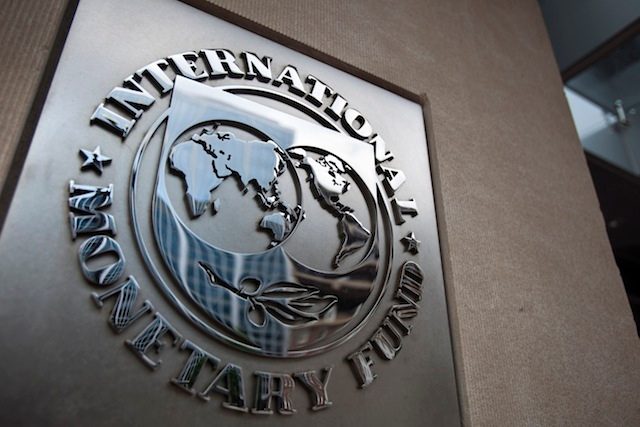SUMMARY
This is AI generated summarization, which may have errors. For context, always refer to the full article.

HONG KONG – Global growth is forecast at 3.5% in 2015 and 3.8% in 2016, with uneven prospects across the main countries and regions, the International Monetary Fund (IMF) reported Tuesday, April 14.
Faster growth under the reformist governments of India and Japan will help cushion the blow to the world economy from a marked slowdown in China, IMF predicted.
As a whole, the world’s most populous region will continue to build up its share of the global economy, the IMF said in its latest World Economic Outlook report.
“Asia’s growth is forecast to hold steady in 2015, and the region is expected to continue outperforming the rest of the world over the medium-term,” it said.
The report comes as China grapples with growth, slumping to levels not seen in almost a quarter of a century.
Much of that slowdown from the breakneck growth of years past has been deliberately engineered by Beijing, as the government repositions the economy to a more sustainable path.
But it leaves global expansion more reliant on the likes of India and Japan, with the United States and Europe still struggling to shake off their torpor.
The IMF said that under reforms by India’s new business-friendly government of Prime Minister Narendra Modi, the country was expected to expand at a much faster pace than previously expected.
“Growth will benefit from recent policy reforms, a consequent pickup in investment, and lower oil prices,” the report said.
“Lower oil prices will raise real disposable incomes, particularly among poorer households, and help drive down inflation.”
Modi swept to power in 2014 on a pledge to revive India’s flagging fortunes, and the IMF said his new broom should sweep in growth of 7.5% this year and next – making it the world’s fastest growing major economy.
That was a sharp increase on past IMF predictions, which had put growth at 6.3% in 2015 and 6.5% next year.
It compared with the report’s expectation for China’s gross domestic product (GDP) to grow 6.8% this year and 6.3% in 2016.
South Korea stalls
The 2015 rate, which is in line with a projection by economists in an AFP survey, would be the slowest since 1990 when the Chinese economy was hammered by foreign sanctions after the Tiananmen Square crackdown.
However, the IMF said “ongoing implementation of structural reforms and lower commodity prices are expected to expand consumer-oriented activities, partially buffering the slowdown.”
The IMF upgraded its view for Japan, but warned that the prospects for a decisive break from years of recession and deflation hinged on deeper structural reforms by Prime Minister Shinzo Abe.
Japan’s growth is seen at 1% this year and 1.2% in 2016 – both more than double from the last outlook’s forecasts.
“This increase reflects support from the weaker yen, higher real wages, and higher equity prices due to the Bank of Japan’s additional quantitative and qualitative easing, as well as lower commodity prices,” the report said.
But should things turn worse than expected in both China and Japan that would reverberate worldwide “given these economies’ large size and deep trade and financial linkages with other nations.”
The risks, it said, were failure to implement crucial reforms in China and Japan not making structural changes.
In South Korea, “momentum has stalled somewhat”, the Fund said, adding that this reflected “fragile household and investor sentiment.”
Its forecast of 3.3% growth this year was based on “the assumption that supportive monetary and macroprudential policies and more favorable terms of trade spur a rebound in aggregate demand.”
In Australia, a downturn in global commodity prices is “exacerbating the long-anticipated decline in resource-related investment.” However, the IMF added that record-low interest rates will help non-resource sectors.
The IMF forecast GDP growth for Australia of 2.8% this year and 3.2% next, largely in line with previous reports.
Among Southeast Asia’s top 5 economies – Indonesia, Malaysia, the Philippines, Singapore, and Thailand – GDP growth was seen at 5.2% in 2015 and 5.3% next year.
The Philippines is projected to hit GDP growth of 6.7% this year, better than the IMF’s previous forecast of a 6.3% growth for 2015. It is also higher than latest World Bank’s growth forecast for the country of 6.5% this year.
Both forecasts from IMF and World Bank are less than the government’s projection of 7 % to 8%.
Growth for the country is seen to temper to 6.3% in 2016. – Rappler.com
Add a comment
How does this make you feel?
There are no comments yet. Add your comment to start the conversation.